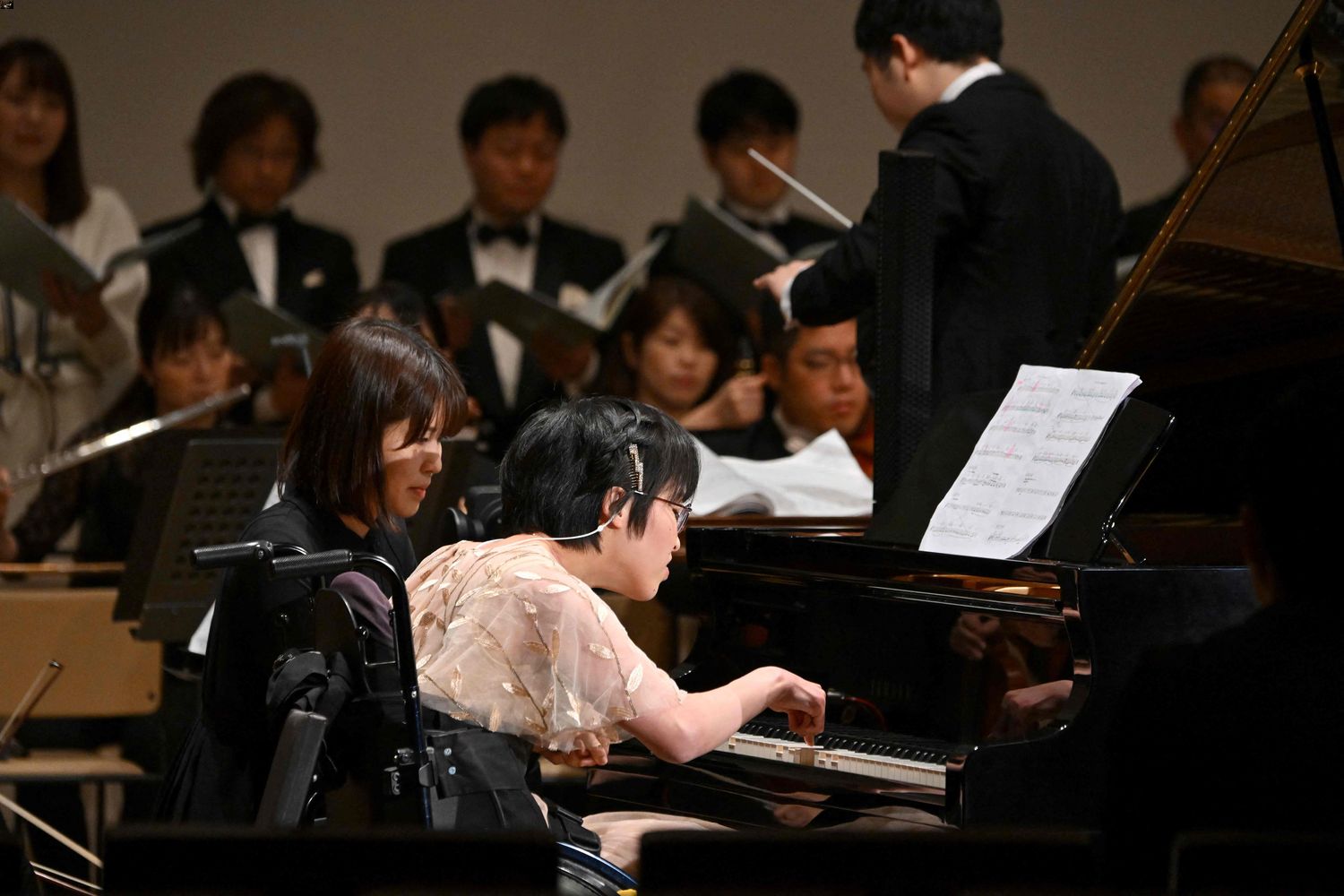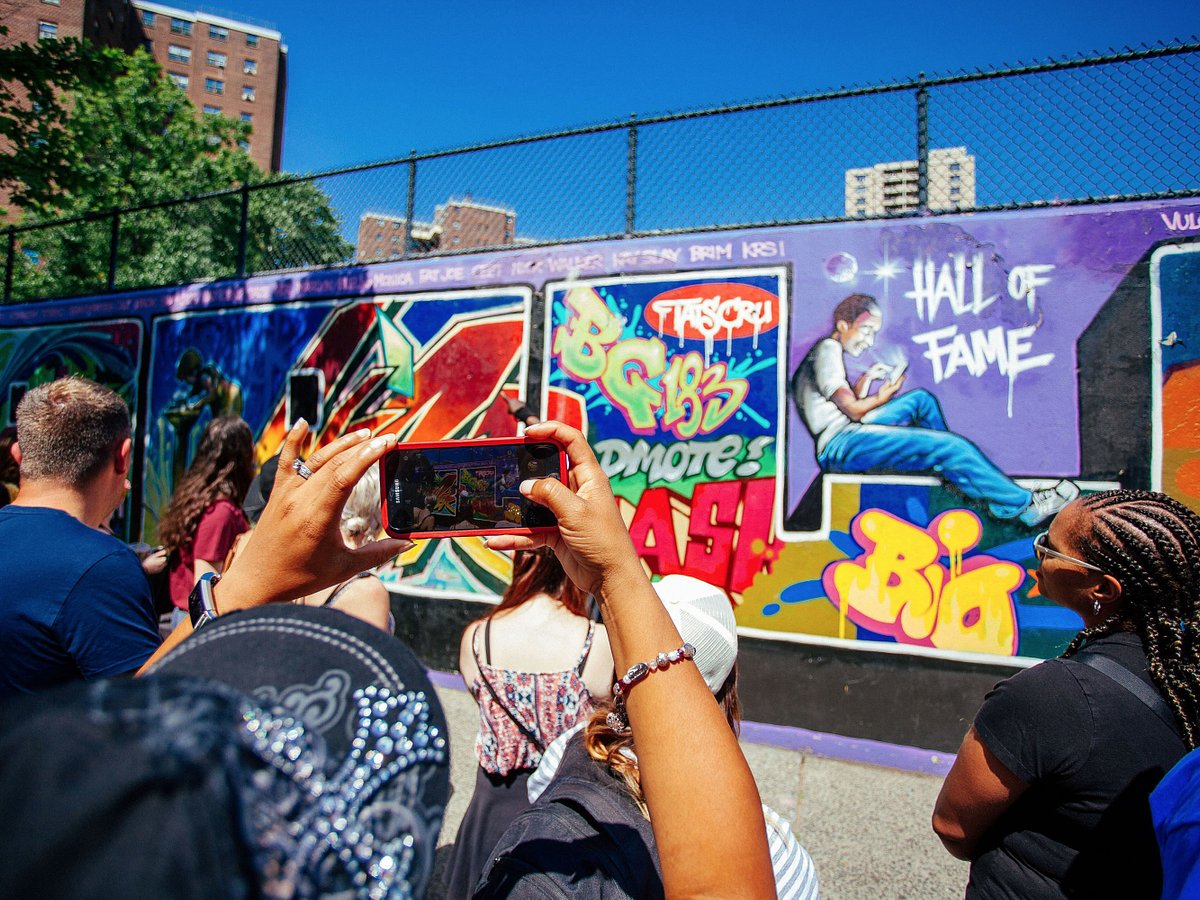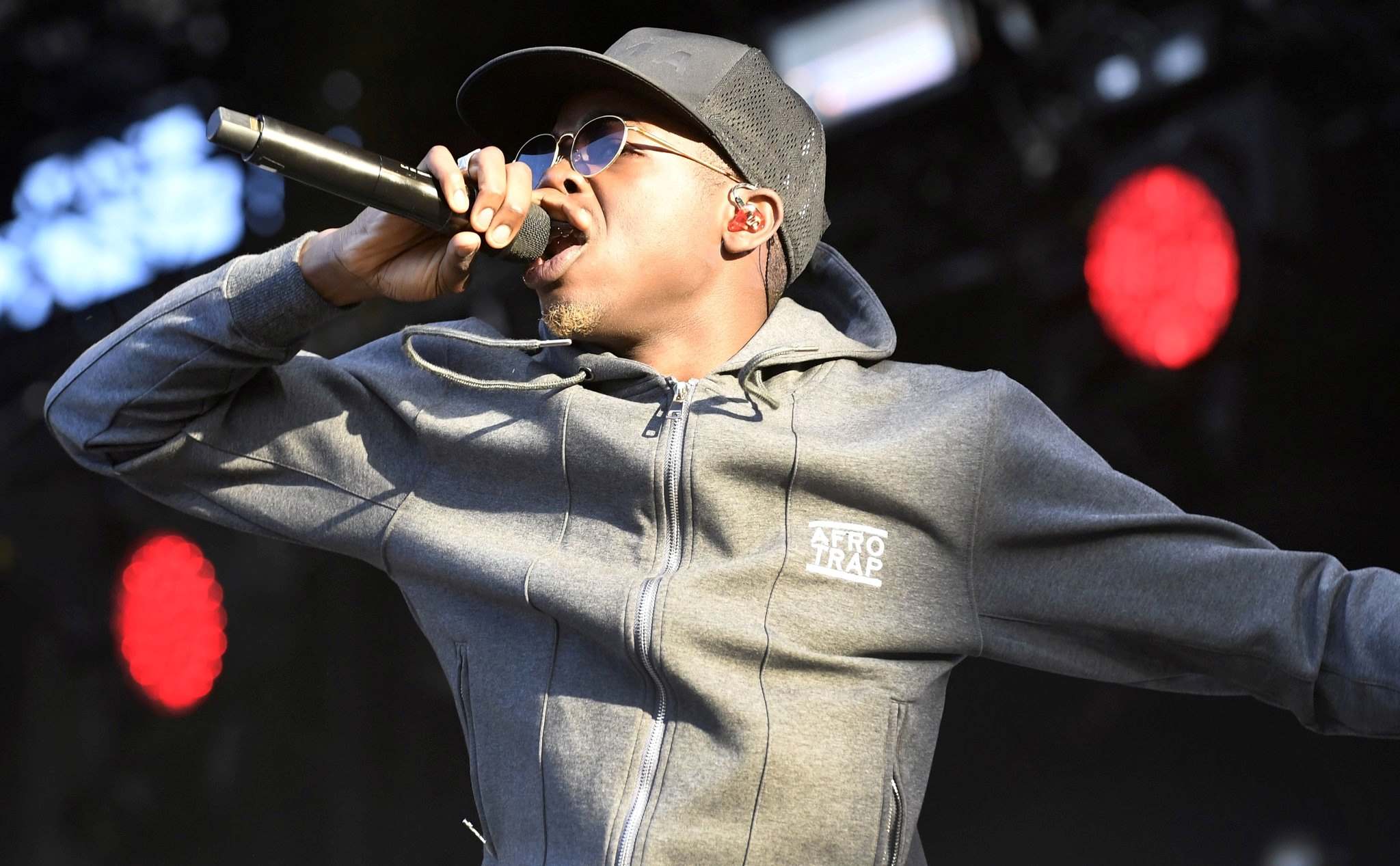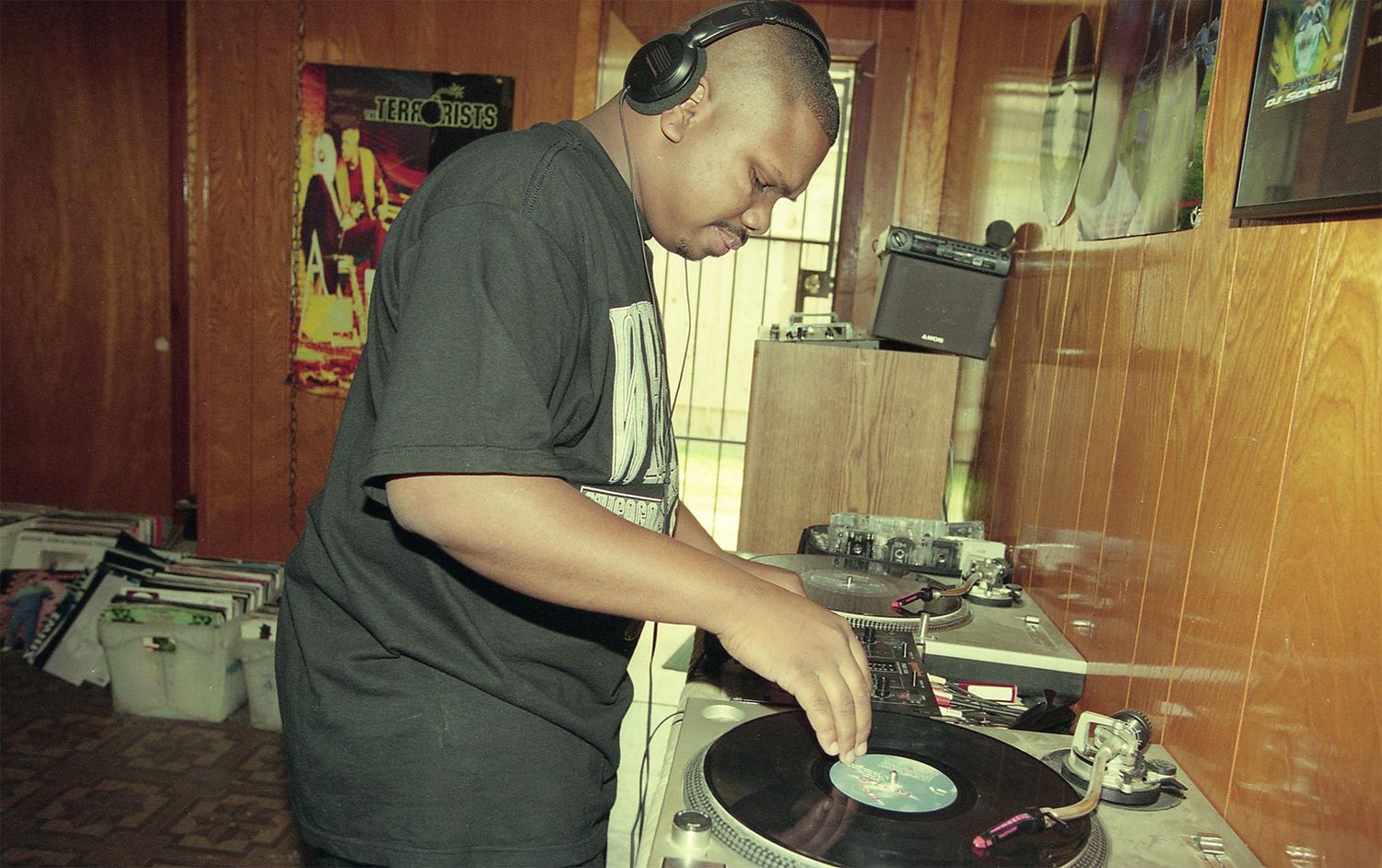

Hip Hop
When Did DJ Kool Herc Started Hip Hop
Modified: January 22, 2024
Learn about the birth of hip hop and the pioneer, DJ Kool Herc, who started the revolutionary music genre that took the world by storm.
(Many of the links in this article redirect to a specific reviewed product. Your purchase of these products through affiliate links helps to generate commission for AudioLover.com, at no extra cost. Learn more)
Table of Contents
Introduction
Hip hop, a genre filled with captivating beats, poetic lyrics, and a rich cultural significance, has become a global phenomenon. But have you ever wondered where it all began? Well, look no further than the legendary DJ Kool Herc. He is widely regarded as the pioneer of hip hop, the man who laid the foundation for a genre that has since captivated the hearts and minds of millions.
Born as Clive Campbell in Kingston, Jamaica on April 16, 1955, DJ Kool Herc played an instrumental role in shaping the sound, style, and culture of hip hop. From his humble beginnings as a young boy, Kool Herc’s passion for music and his innovative DJing techniques would change the course of music history forever.
Hip hop originated as a cultural movement in Bronx, New York City, during the 1970s. It emerged from the fusion of African American and Caribbean music and dance styles, as well as the cultural and social experiences of the inner-city youth. In this vibrant cultural melting pot, DJ Kool Herc played a vital role in bringing together various elements and creating something entirely new.
With his Jamaican roots, Herc brought a unique sound to the table. He introduced the concept of “toasting,” a tradition in Jamaican music where an MC (Master of Ceremonies) would chant over the music. This style of mixing and rapping became a defining characteristic of hip hop.
As a DJ, Kool Herc revolutionized the art of turntablism. He used two turntables to create continuous loops of instrumental breaks, extending the most danceable sections of songs. This technique, known as “breakbeat,” allowed people to showcase their dance moves with the beats playing on repeat. It provided the perfect backdrop for B-boys and B-girls (breakdancers) to showcase their skills.
The first hip hop party, organized by Kool Herc, took place on August 11, 1973, at 1520 Sedgwick Avenue in the Bronx. This historic gathering marked the birth of a new musical and cultural movement. The party attracted a diverse crowd, including dancers, MCs, and graffiti artists. It became a melting pot of creativity and self-expression.
Over the years, hip hop evolved and grew, incorporating various subgenres and spreading its influence across the globe. DJs like Kool Herc paved the way for future artists, inspiring generations to embrace hip hop as a platform for storytelling, social commentary, and artistic expression.
From the streets of the Bronx to stages worldwide, DJ Kool Herc’s impact on hip hop cannot be overstated. His innovative DJing techniques and his ability to bring people together through music laid the foundation for a cultural movement that continues to thrive today.
Join us as we delve into the life and legacy of DJ Kool Herc, exploring his contributions to hip hop and the lasting impact he has had on the music industry. Get ready to embark on a journey through the birth and evolution of this groundbreaking genre.
Early Life of DJ Kool Herc
Clive Campbell, known by his stage name DJ Kool Herc, was born on April 16, 1955, in Kingston, Jamaica. Growing up in the vibrant neighborhoods of Kingston, Herc was exposed to a diverse array of musical genres, including reggae, ska, and dancehall. This early exposure to music greatly influenced his future career as a DJ.
In 1967, when Kool Herc was just 12 years old, he immigrated to the Bronx, New York, with his family. Settling in the South Bronx, a neighborhood plagued by poverty and social unrest, Herc found solace in the music that surrounded him. He developed a deep love for the rhythm and beats that emanated from the streets.
As a teenager, Kool Herc began to experiment with his own DJing skills. He would set up his equipment in the recreation room of his building, entertaining the neighborhood with his unique blend of music. Herc’s sound was a fusion of Jamaican music, funk, and soul, creating a new sound that would transcend borders and generations.
Though his sound was gaining popularity, it wasn’t until Herc attended Alfred E. Smith High School that he truly began to flourish as a DJ. He began hosting parties at the school, captivating his peers with his innovative mixing techniques and infectious energy. These early parties would later serve as the blueprint for the monumental hip hop parties to come.
In addition to his DJing skills, Kool Herc also made a name for himself as a b-boy, or breakdancer, showcasing his talents alongside other budding dancers in the Bronx. This gave him a unique perspective on the music, as he understood the importance of creating beats and breaks that would energize and inspire the dancers.
Kool Herc’s ability to read the crowd and create an electric atmosphere around his DJ sets soon caught the attention of the Bronx community. His parties began to attract large crowds, bringing together people from various backgrounds and neighborhoods. These gatherings became an escape from the challenges of everyday life, a place where people could come together, showcase their talents, and immerse themselves in the power of music.
Despite facing numerous challenges and obstacles, DJ Kool Herc’s passion for music and dedication to his craft propelled him to become a seminal figure in the birth of hip hop. Throughout his formative years, he honed his skills as a DJ and b-boy, setting the stage for the revolutionary impact he would have on the music industry and popular culture as a whole.
Birth of Hip Hop
The birth of hip hop can be traced back to the turbulent streets of the Bronx in the 1970s, where DJ Kool Herc played a pivotal role in laying the foundation for this groundbreaking genre. In this era marked by social and economic challenges, the youth of the Bronx sought a form of expression and escape, and hip hop provided just that.
It was at 1520 Sedgwick Avenue, on August 11, 1973, that DJ Kool Herc organized the first hip hop party. This historic event would forever change the course of music history. Herc, armed with his turntables, mixer, and a sound system, created an immersive experience that brought together the key elements of hip hop – DJing, MCing, breakdancing, and graffiti art.
At these parties, Kool Herc showcased his unique style of DJing, which incorporated cutting-edge techniques like breakbeats and instrumental loops. He would isolate the most danceable sections of songs, known as the “breaks,” and extend them using two turntables. This technique provided the perfect platform for dancers to showcase their moves and for MCs to deliver their lyrical prowess.
Speaking of MCs, Kool Herc’s parties provided them with a platform to shine. MCs, or Master of Ceremonies, would grab the microphone and deliver energetic rhymes and freestyles over the beats laid down by the DJ. This dynamic interaction between the DJ and the MC laid the groundwork for the symbiotic relationship that is a hallmark of hip hop to this day.
Alongside the DJing and MCing, breakdancing emerged as a vital element of hip hop culture. B-boys and B-girls took to the dance floor, showcasing their acrobatic moves and fearless energy. The combination of intricate footwork, power moves, and intricate freezes captivated audiences and added another layer of excitement to the hip hop parties.
Graffiti art also flourished as an integral part of the hip hop movement. Artists would create bold and vibrant murals that adorned the walls of the Bronx, serving as visual representations of the culture and its values. Graffiti art not only added an aesthetic element to hip hop but also became a powerful form of self-expression and social commentary.
The birth of hip hop represented a cultural awakening, giving a voice to the marginalized youth of the Bronx and providing them with a platform to express their experiences, frustrations, and aspirations. It was a form of artistic revolution, breaking free from the constraints of traditional music and art forms.
From those early parties organized by DJ Kool Herc, hip hop quickly spread its wings, captivating the hearts and minds of individuals far beyond the Bronx. It gave a voice to communities across the globe, providing an outlet for self-expression, storytelling, and social commentary.
Today, hip hop has evolved into a multi-billion dollar industry, influencing fashion, language, and even politics. But its roots remain firmly planted in the creativity and passion of DJ Kool Herc and the vibrant streets of the Bronx. Without his pioneering efforts, hip hop as we know it might never have come into existence.
DJ Kool Herc’s Contribution to Hip Hop
DJ Kool Herc is widely regarded as the founding father of hip hop, and his contributions to the genre cannot be overstated. From his innovative DJing techniques to his role in organizing the first hip hop parties, Kool Herc played a vital role in shaping the sound, style, and culture of hip hop.
One of Kool Herc’s major contributions to hip hop was his revolutionary DJing style. He introduced the concept of “breakbeat,” which involved isolating and extending the instrumental sections of songs known as the “breaks.” This technique allowed dancers to showcase their moves and created a vibrant atmosphere on the dance floor. Kool Herc’s mastery of blending different genres, such as funk, soul, and Jamaican music, made his sets unique and captivating.
Kool Herc also played a crucial role in popularizing the MC (Master of Ceremonies) or rapper element of hip hop. At his parties, Kool Herc would hand over the microphone to MCs, who would freestyle and deliver energetic rhymes over his beats. This interaction between the DJ and the MC became the foundation of the hip hop performance, highlighting the importance of both elements working in harmony. Kool Herc’s parties paved the way for future MCs to develop their skills and become integral figures in the hip hop culture.
Moreover, Kool Herc’s parties became a platform for the emerging street culture of the Bronx. The events brought together people from different neighborhoods and backgrounds, providing a space for creative expression and fostering a sense of community. Kool Herc’s parties not only showcased his talent as a DJ but also became a meeting ground for breakdancers, graffiti artists, and hip hop enthusiasts, solidifying the connection between these different art forms.
Furthermore, Kool Herc’s Jamaican heritage influenced the unique sound and style of hip hop. He incorporated elements of Jamaican music, such as toasting, in his DJ sets. This fusion of genres and cultures added a distinct flavor to hip hop, setting it apart from other musical genres of the time. Kool Herc’s Jamaican roots also introduced the concept of sound system culture, where a DJ and their equipment became the center of attention, a concept that has become integral to the hip hop scene.
Kool Herc’s contributions to hip hop extended beyond his parties and DJing skills. He was a mentor and inspiration to many aspiring artists who would go on to shape the future of hip hop. His impact on the next generation of DJs, MCs, and producers is immeasurable, as many credit him with inspiring their own careers and pushing the boundaries of the genre.
Overall, DJ Kool Herc’s contribution to hip hop cannot be overstated. His innovative DJing techniques, his ability to create vibrant parties, and his role in shaping the culture of hip hop laid the foundation for a global phenomenon. The impact of his groundbreaking work continues to be felt in the music industry, as hip hop remains one of the most influential and dominant genres today.
The First Hip Hop Party
On August 11, 1973, a historic event took place at 1520 Sedgwick Avenue in the Bronx – the birth of the first hip hop party. The mastermind behind this groundbreaking gathering was none other than DJ Kool Herc. Little did anyone know at the time, this party would mark a turning point in music history, giving birth to a cultural revolution that would ripple across the globe.
At the age of only 18, Kool Herc, armed with his turntables, mixer, and a powerful sound system, transformed the recreation room of his building into an electrifying space where hip hop was born. This event was different from any party that had come before. It combined music, dance, and creative expression in a way that had never been seen before.
The first hip hop party was a melting pot of talent, creativity, and cultural exchange. People from various neighborhoods and backgrounds flocked to Sedgwick Avenue, eager to experience the new phenomenon that Kool Herc had unleashed. The party brought together dancers, MCs, graffiti artists, and music enthusiasts, united by their passion for this emerging art form.
With his unique DJing style, Kool Herc captivated the crowd. He skillfully mixed different genres of music, showcasing his expertise in blending funk, soul, and Jamaican sounds. His mastery of the turntables and his ability to read the energy of the room created an atmosphere that was electric and infectious.
One of the distinct features of the first hip hop party was the emphasis on breakbeats. Kool Herc’s use of instrumental breaks, the most danceable sections of songs, allowed the B-boys and B-girls (breakdancers) to showcase their skills. The dancers would battle and showcase their creative and acrobatic moves, while the music provided the pulsating rhythm that fueled their energy.
Another crucial element of the party was the role of MCs, or rappers. Kool Herc would hand over the microphone to these talented individuals, who would freestyle and deliver energetic rhymes over his beats. This was the birth of the MC-DJ interaction that became a fundamental aspect of hip hop culture.
The first hip hop party was a game-changer, not just because of the music and dance but also because of the sense of community and creative expression it fostered. It provided a safe space for the youth of the Bronx to escape the challenges of everyday life and find solace in the power of music.
Little did anyone know that this historic gathering would be the catalyst for a cultural movement that would resonate with people around the world. The first hip hop party organized by DJ Kool Herc marked the beginning of a new era in music, a movement that would give a voice to the unheard and revolutionize popular culture.
Today, the legacy of that first hip hop party lives on. It serves as a reminder of the power of music to unite, inspire, and transform lives. DJ Kool Herc’s vision and creativity laid the foundation for a global phenomenon, and we owe a debt of gratitude to that historic gathering on Sedgwick Avenue that changed the world of music forever.
Evolution of Hip Hop Culture
Since its humble beginnings in the Bronx, hip hop has evolved into a dynamic and multifaceted cultural movement. From the music to the fashion, dance, and art, hip hop culture has continually evolved and adapted, influencing generations of artists and leaving an indelible mark on popular culture.
In the early years, hip hop was primarily associated with block parties and DJing. As the genre gained popularity, it began to branch out into different subgenres and styles. Artists like Grandmaster Flash, Afrika Bambaataa, and Run-DMC emerged, pushing the boundaries of hip hop and introducing new elements such as storytelling, social commentary, and complex rhyme schemes.
The 1980s brought the emergence of rap music as a mainstream force. Artists like LL Cool J, Public Enemy, and NWA used their music as a platform to amplify social and political issues affecting their communities. Rap became a powerful form of protest and a voice for the marginalized, shining a spotlight on the realities of inner-city life and addressing topics such as police brutality, systemic racism, and poverty.
As the 1990s rolled around, hip hop culture continued to expand and diversify. The East Coast-West Coast rivalry between artists like Tupac Shakur and The Notorious B.I.G. captured the attention of the world. This era also saw the rise of gangsta rap, with artists such as Ice-T, Dr. Dre, and Snoop Dogg leading the way.
The turn of the millennium brought new subgenres and styles into the hip hop landscape. Artists like Eminem and Kanye West pushed the boundaries of what was thought possible in hip hop, exploring different themes and experimenting with innovative production techniques. The rise of the internet and social media also played a significant role in the evolution of hip hop, giving artists a direct line of communication with their fans and allowing for the democratization of the music industry.
Another significant aspect of the evolution of hip hop culture has been the influence it has had on fashion. From the emergence of streetwear brands to iconic fashion trends like baggy jeans, oversized jerseys, and sneakers, hip hop has left an indelible mark on the fashion industry. Artists like Jay-Z and Pharrell Williams have even ventured into the world of fashion design, creating successful clothing lines and further bridging the gap between hip hop and fashion.
The influence of hip hop culture is not limited to music and fashion. It has consistently found expression in other artistic forms as well. Graffiti art, which originated alongside hip hop, has evolved into a respected art form in its own right. Artists like Keith Haring and Jean-Michel Basquiat emerged from the hip hop scene, showcasing their talents on canvas and becoming influential figures in the art world.
From hip hop’s beginnings in the Bronx to its global reach today, the culture has continually evolved to reflect the changing times and experiences of its artists. It has become a platform for storytelling, social commentary, and self-expression, giving a voice to those who have been traditionally marginalized. Hip hop’s ability to adapt and innovate is a testament to its enduring influence and significance in contemporary culture.
DJ Kool Herc’s Influence on Future Artists
As the founding father of hip hop, DJ Kool Herc’s influence on future artists cannot be overstated. His groundbreaking techniques, innovative DJing style, and the cultural movement he helped birth have paved the way for countless artists and have left an indelible mark on the music industry.
Kool Herc’s unique DJing techniques, such as breakbeats and instrumental loops, revolutionized the art of DJing and became a blueprint for future generations. His ability to read the crowd and create a seamless blend of genres showcased his mastery of the turntables and inspired aspiring DJs to push the boundaries of what was possible.
One of the most significant ways Kool Herc influenced future artists was through his emphasis on the importance of the MC or rapper. By passing the microphone to talented wordsmiths, Kool Herc played a crucial role in establishing the role of the MC as an integral part of hip hop. This inspired countless artists to develop their own unique styles of lyricism and flow.
Kool Herc’s parties and the vibrant hip hop community he cultivated served as a breeding ground for future talent. Many artists who attended his parties were inspired by the energy and creativity they experienced firsthand. This led to the emergence of artists like Grandmaster Flash, Afrika Bambaataa, and Run-DMC, who would go on to shape the future of hip hop.
In addition to his direct influence on individual artists, Kool Herc’s impact on the hip hop culture as a whole cannot be overstated. His parties became a meeting ground for different elements of the culture, including breakdancers and graffiti artists. The sense of community and creativity fostered at these gatherings inspired a generation of artists to explore their own artistic pursuits within the larger hip hop framework.
Kool Herc’s Jamaican roots also played a significant role in shaping the sound and style of hip hop. His incorporation of Jamaican music and toasting techniques introduced new elements to the genre and opened the doors for future artists to explore and incorporate different musical influences and cultural references.
The influence of DJ Kool Herc can be seen in countless artists who have emerged since the birth of hip hop. From pioneers like LL Cool J, Public Enemy, and NWA, who carried the torch of social and political commentary, to more recent artists like Kendrick Lamar, J. Cole, and Drake, who continue to push the boundaries of artistry and storytelling.
Kool Herc’s impact is not only limited to the world of hip hop. His influence can be observed in other genres as well, as artists across the musical spectrum have drawn inspiration from his innovative techniques, his fearlessness in pushing boundaries, and his commitment to authenticity and self-expression.
Ultimately, DJ Kool Herc’s influence on future artists goes beyond music. He laid the groundwork for a cultural shift, providing a platform for underrepresented communities to have their voices heard. His commitment to community-building and his unwavering passion for the craft continue to inspire generations of artists to use their creativity and artistry to create meaningful and impactful work.
Conclusion
DJ Kool Herc’s impact on hip hop is immeasurable. As the founding father of the genre, he laid the foundation for a cultural movement that continues to shape the music industry and resonate with audiences worldwide. From his innovative DJing techniques to his role in organizing the first hip hop parties, Kool Herc’s contributions to hip hop are unparalleled.
Through his revolutionary DJing style, Kool Herc introduced breakbeats and instrumental loops, elevating the role of the DJ and inspiring future generations. His emphasis on the MC or rapper highlighted the importance of lyrical skill and flow, leading to the emergence of countless talented artists who have carried the torch of hip hop’s storytelling tradition.
The first hip hop party organized by Kool Herc became a platform for creativity and self-expression, bringing together dancers, graffiti artists, and music enthusiasts from all walks of life. These parties were the catalyst for the birth of a cultural revolution, giving a voice to the marginalized, and uniting communities through the power of music.
As hip hop evolved, Kool Herc’s influence continued to reverberate. Artists like Grandmaster Flash, Run-DMC, and NWA drew inspiration from his innovations, pushing the boundaries of the genre and expanding its impact. Kool Herc’s Jamaican roots added a unique sound and style to hip hop, opening the doors for future artists to experiment with different influences and create artistic fusions.
From the streets of the Bronx, hip hop has become a global phenomenon, influencing fashion, language, and even politics. Kool Herc’s legacy can be seen in the diverse range of artists who have been inspired by his work, from the socially conscious rap of Public Enemy to the introspective storytelling of Kendrick Lamar.
In conclusion, DJ Kool Herc’s influence on hip hop cannot be understated. His groundbreaking techniques, innovative DJing style, and his contributions to the hip hop party culture have shaped the genre into what it is today. His commitment to authentic self-expression, community-building, and pushing the boundaries of music continue to inspire artists of all backgrounds to find their voice and make their mark on the world through hip hop.











